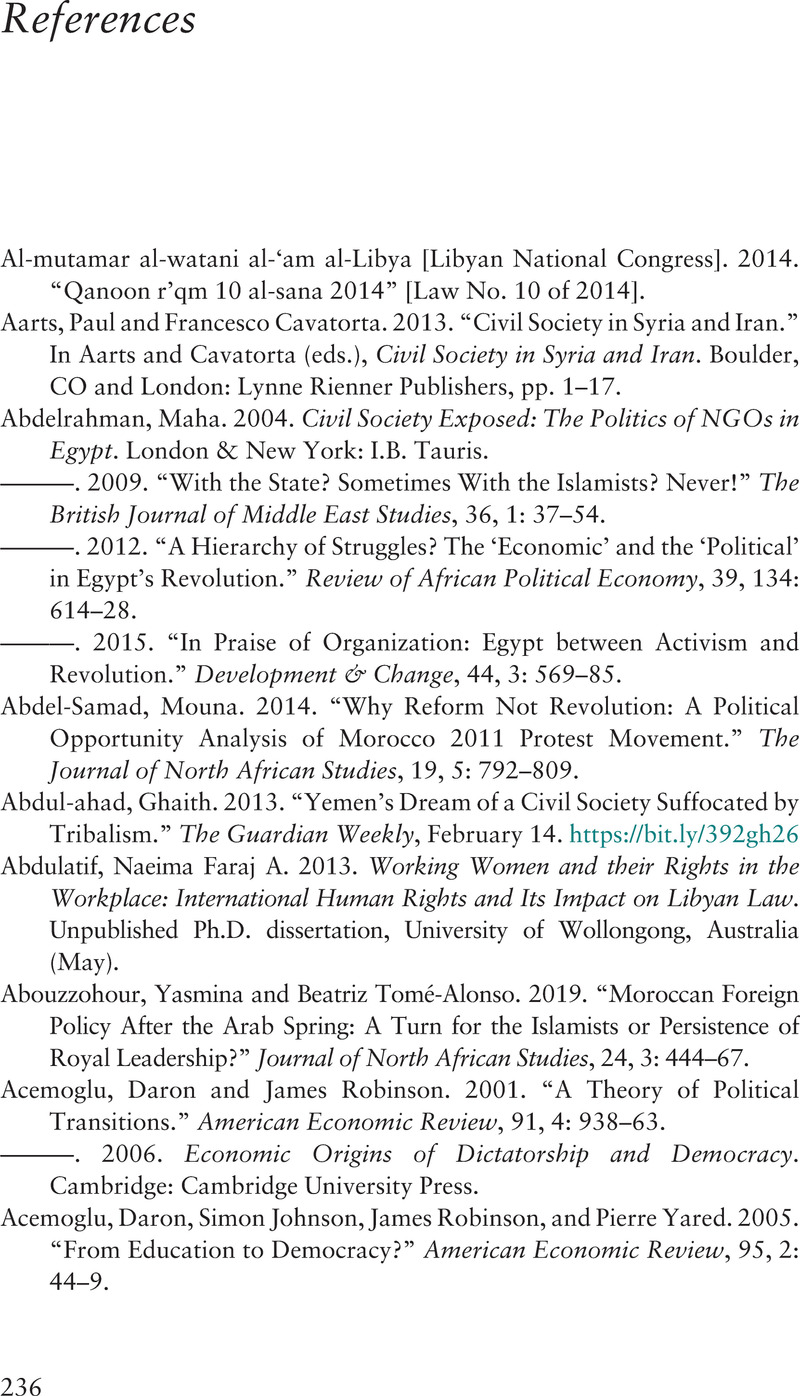Book contents
- After the Arab Uprisings
- After the Arab Uprisings
- Copyright page
- Dedication
- Contents
- Figures
- Maps
- Tables
- Acknowledgments
- Abbreviations
- 1 Introduction and Overview
- 2 Pathways to Democratization: The Arab Spring in Comparative Perspective
- 3 States and Political Institutions
- 4 Civil Society
- 5 Gender Relations and Women’s Mobilizations
- 6 International Connections and Intervention
- 7 Findings and Conclusions
- References
- Index
- References
References
Published online by Cambridge University Press: 22 July 2021
- After the Arab Uprisings
- After the Arab Uprisings
- Copyright page
- Dedication
- Contents
- Figures
- Maps
- Tables
- Acknowledgments
- Abbreviations
- 1 Introduction and Overview
- 2 Pathways to Democratization: The Arab Spring in Comparative Perspective
- 3 States and Political Institutions
- 4 Civil Society
- 5 Gender Relations and Women’s Mobilizations
- 6 International Connections and Intervention
- 7 Findings and Conclusions
- References
- Index
- References
Summary

- Type
- Chapter
- Information
- After the Arab UprisingsProgress and Stagnation in the Middle East and North Africa, pp. 236 - 274Publisher: Cambridge University PressPrint publication year: 2021

